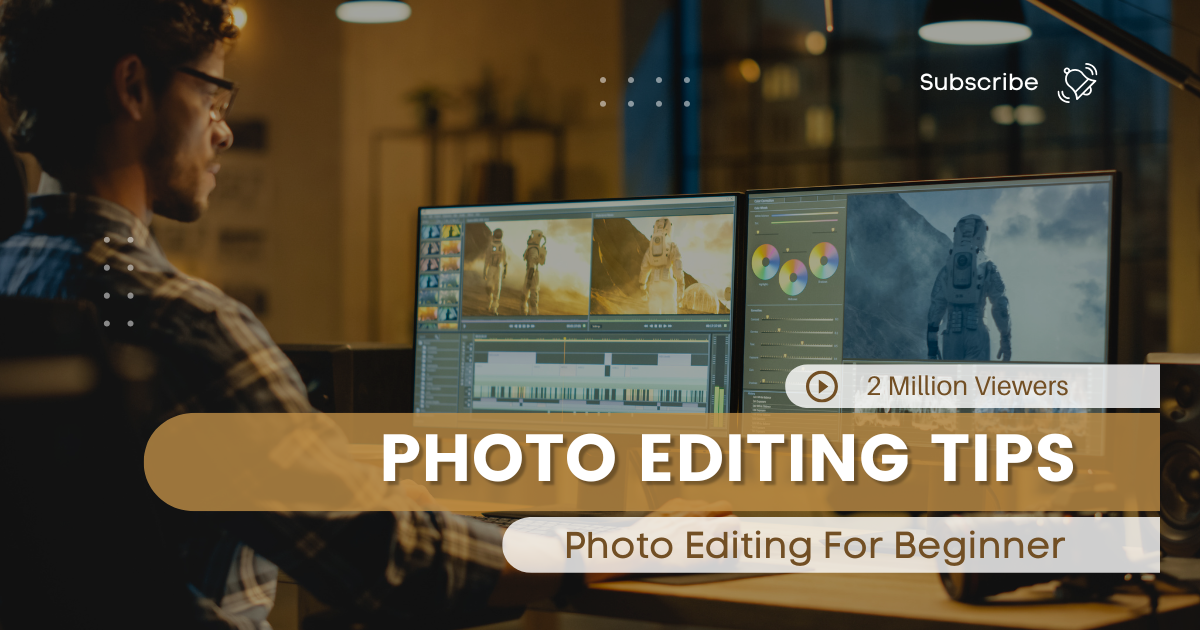
Best Photo Editing Tips : A Guide to Mastering Photo Editing
Best Photo Editing Tips: A Guide to Mastering Photo Editing
In today’s digital era, learning photo editing tips is essential. Whether you are editing pictures for social media or professional graphic designing, the right editing techniques can make your photos stand out. In this article, we will share the best photo editing tips to enhance your editing skills and create visually compelling images.
Choose the Right Software
Selecting the right tool for photo editing is crucial. Some of the best software include:
- Adobe Photoshop (For professional-level editing with advanced tools)
- Adobe Lightroom (Best for color grading, batch editing, and presets)
- Canva (User-friendly platform for easy designing and basic editing)
- Snapseed and PicsArt (Great options for mobile users)
Each software offers unique features, so choose one based on your specific needs.
Adjust Brightness and Contrast
To make your photo more appealing, adjusting brightness and contrast is essential. Excessive brightness can wash out the image, while low brightness can make it dull. Increasing contrast helps in enhancing details and making the photo more vivid. This is one of the most important photo editing tips to follow.
Color Correction and Hue-Saturation Adjustment
Color correction improves the overall tone of your image. To achieve better results:
- Use HSL sliders (Hue, Saturation, Luminance) to fine-tune colors.
- If one color is too dominant, adjust its saturation for a balanced look.
- Try white balance adjustments to fix color temperature issues.
Increase Sharpness and Details
If your photo appears slightly blurry, increasing sharpness can enhance its details. However, over-sharpening can introduce noise, making the image look unnatural. Tools like Unsharp Mask in Photoshop or Detail Enhancements in Lightroom can help achieve the right balance.
Remove Unwanted Objects
Sometimes, distractions in the background can ruin an otherwise great photo. To fix this:
- Use Photoshop’s Clone Stamp Tool or Healing Brush Tool to remove blemishes and unwanted elements.
- Mobile users can take advantage of Snapseed’s Healing Tool for quick edits.
Edit the Background
If the background does not complement the subject, you can edit or replace it using:
- Remove.bg, an online background removal tool.
- Photoshop’s Select Subject and Masking Tool for precise background changes.
- Blurring the background slightly to create a depth effect, making the subject stand out.
Use Filters and Presets Wisely
Filters can give your photos a unique touch, but excessive use may ruin the natural look. Instead:
- Experiment with Lightroom’s Custom Presets to maintain consistency.
- Create your own presets to speed up the editing process.
- Use subtle filter adjustments rather than overpowering effects.
Save in the Right Format and Size
Choosing the correct file format and size ensures high-quality results:
- JPEG – Best for social media and web use due to its compressed size.
- PNG – Ideal for high-quality images and transparent backgrounds.
- TIFF – Preferred for professional printing due to lossless quality.
Also, consider resizing your images to optimize for different platforms.
Utilize AI-Based Editing Tools
Artificial Intelligence (AI) tools have made editing easier than ever. Some useful AI-powered tools include:
- Luminar AI for automatic enhancements.
- Photoshop AI Tools for intelligent selections and retouching.
- Remini for restoring and upscaling low-resolution images.
These tools help in achieving professional edits with minimal effort.
Crop and Reframe Your Photos
Cropping and reframing can dramatically change the composition of a photo. Follow these steps:
- Apply the Rule of Thirds to improve balance.
- Crop out distractions while keeping the main subject centered.
- Experiment with different aspect ratios for various social media platforms.
Experiment with Lighting Effects
Lighting plays a crucial role in the final output of an edited photo. Adjusting highlights, shadows, and mid-tones can create a more dramatic or subtle effect. Use tools like Curves and Levels in Photoshop to fine-tune lighting.
Master the Art of Layering
Layering is a fundamental technique in Photoshop that allows for non-destructive editing. By using Adjustment Layers, you can edit colors, contrast, and exposure without altering the original image.
Conclusion
By applying these photo editing tips, you can transform any image into a masterpiece. Using the right tools and techniques will significantly improve your editing skills. Whether you’re into digital marketing, graphic designing, or social media management, these photo editing tips will be highly beneficial in making your visuals stand out.
How did you find this guide? Share your photo editing experience in the comments!
For more insightful guides and resources on photo editing, trading and digital marketing, visit our Home Page to explore more
